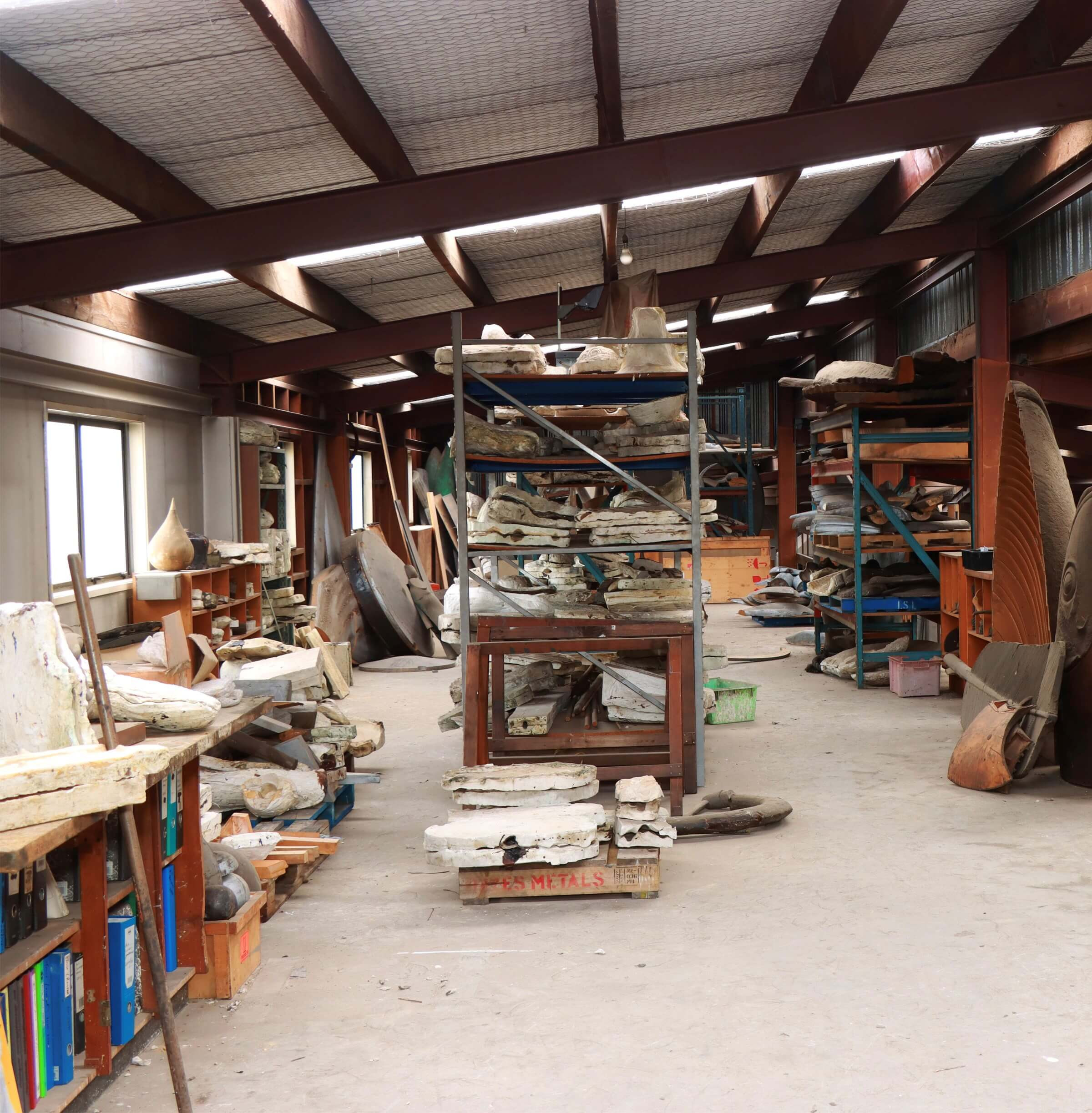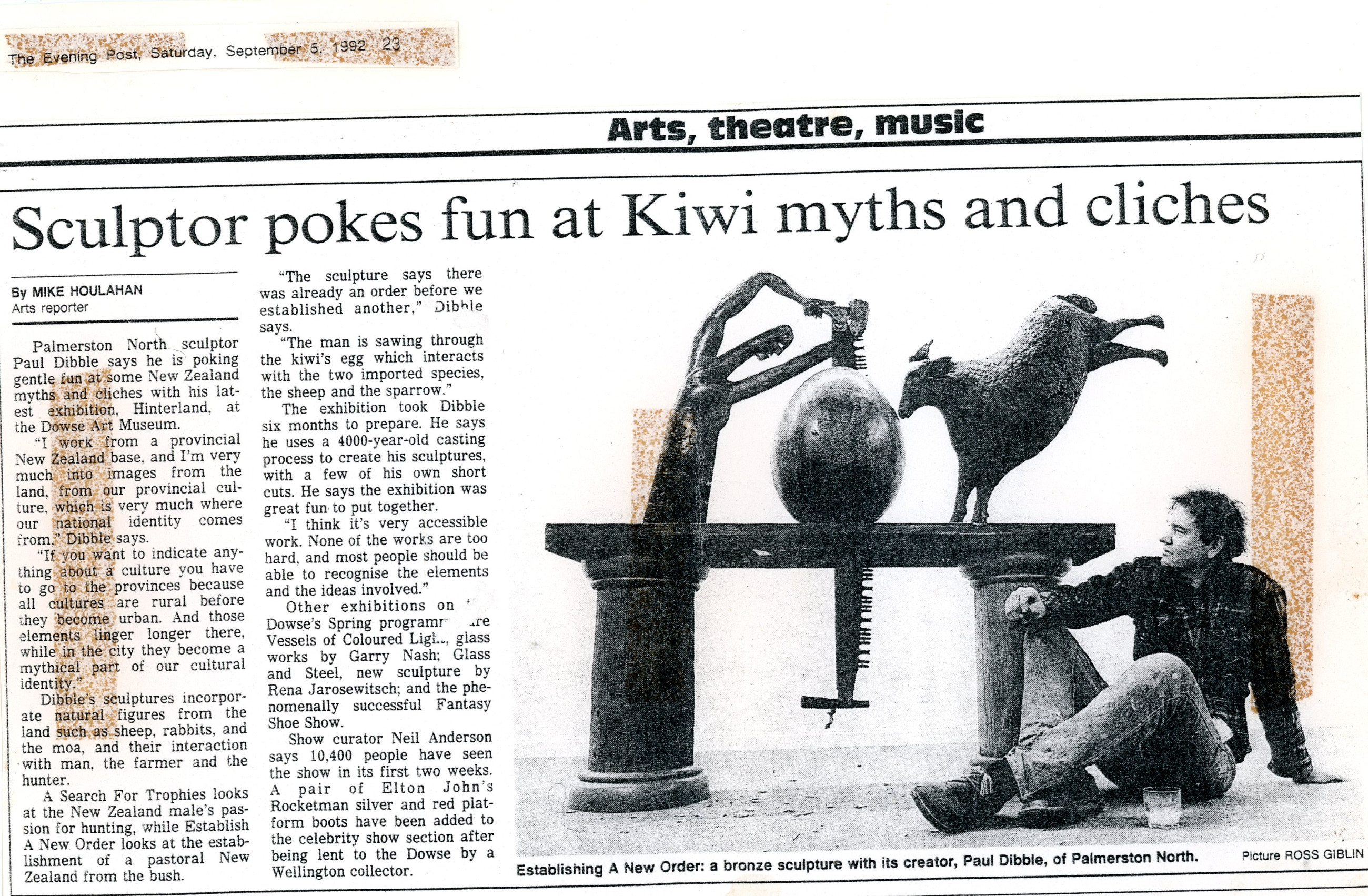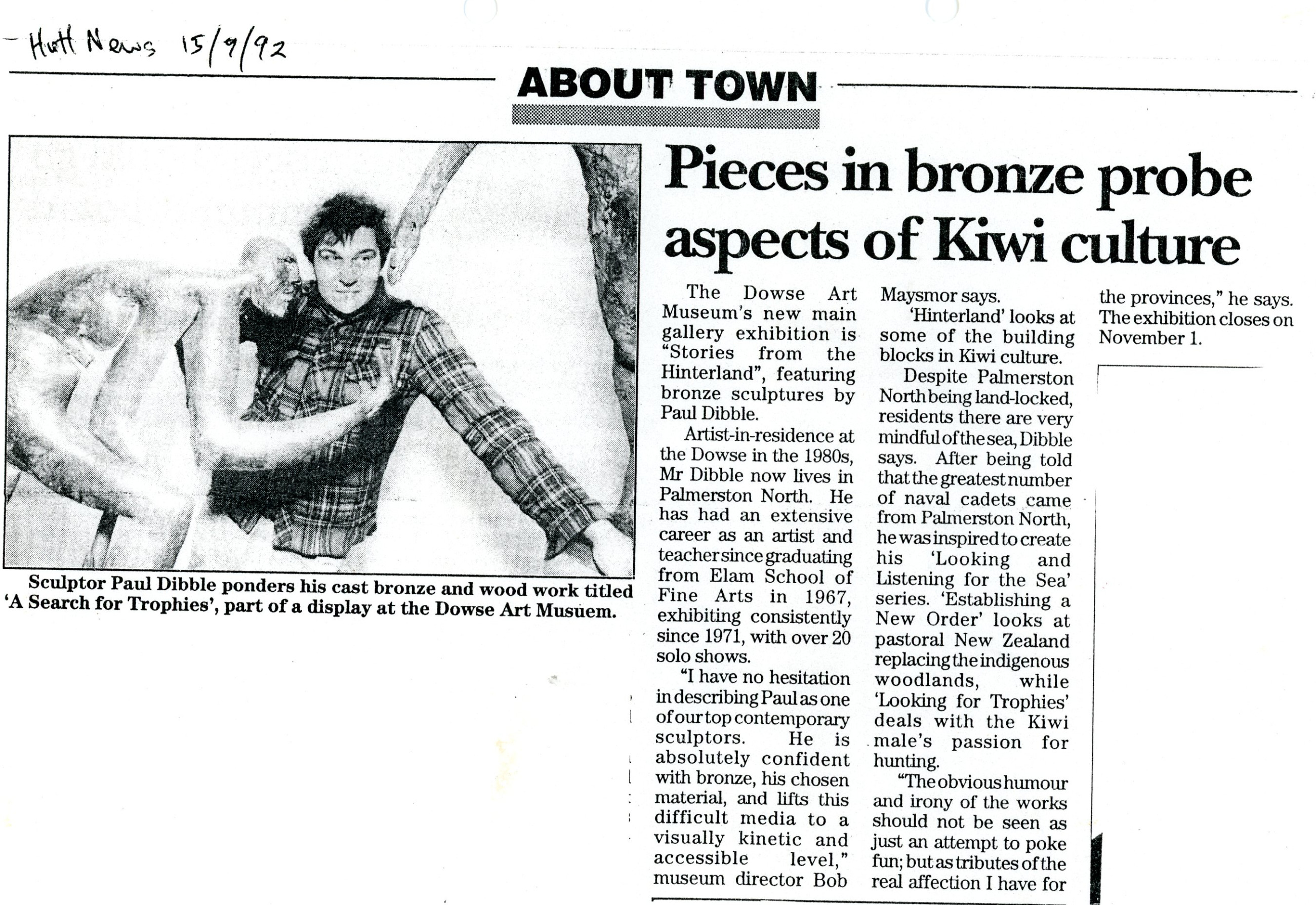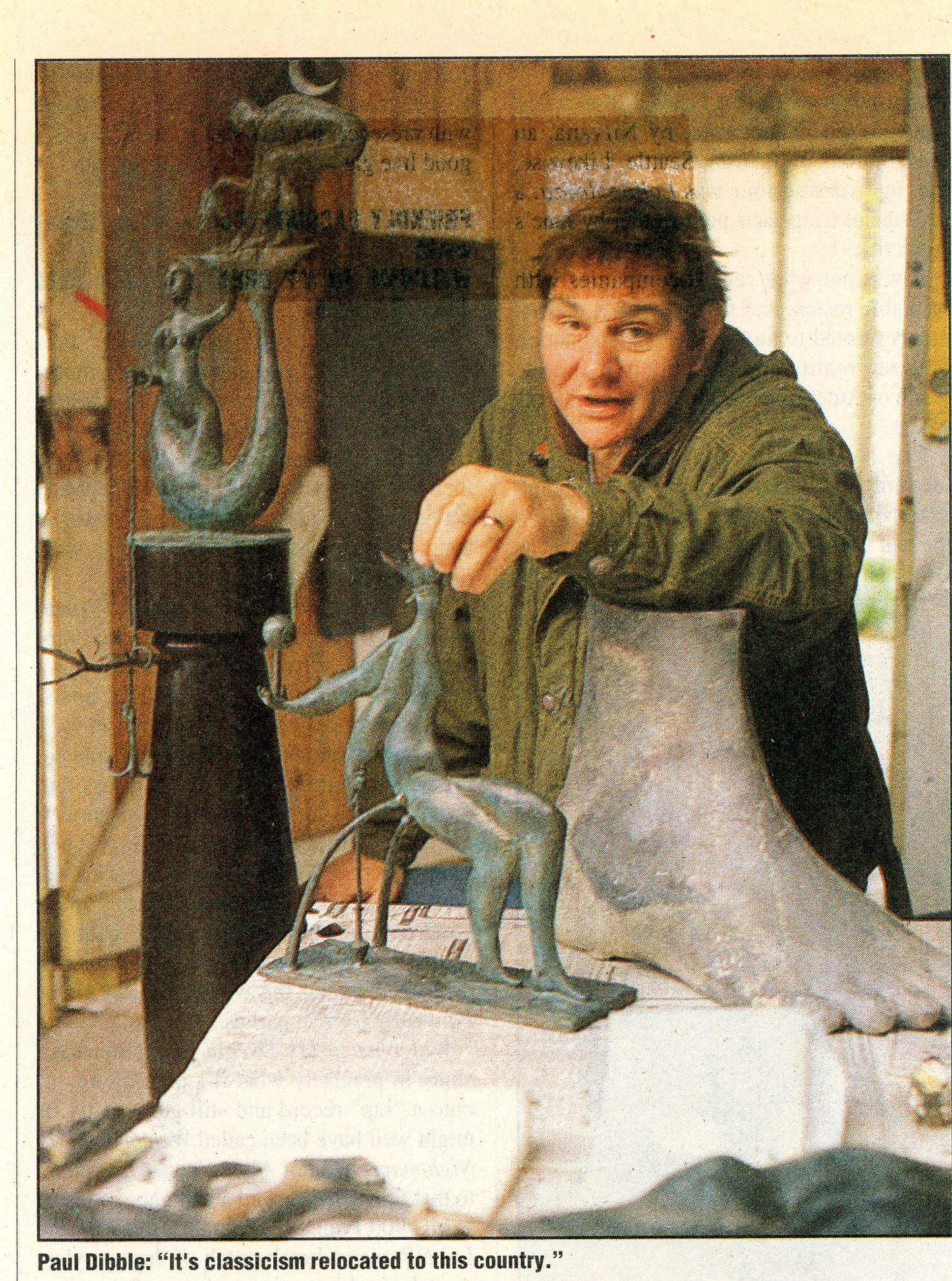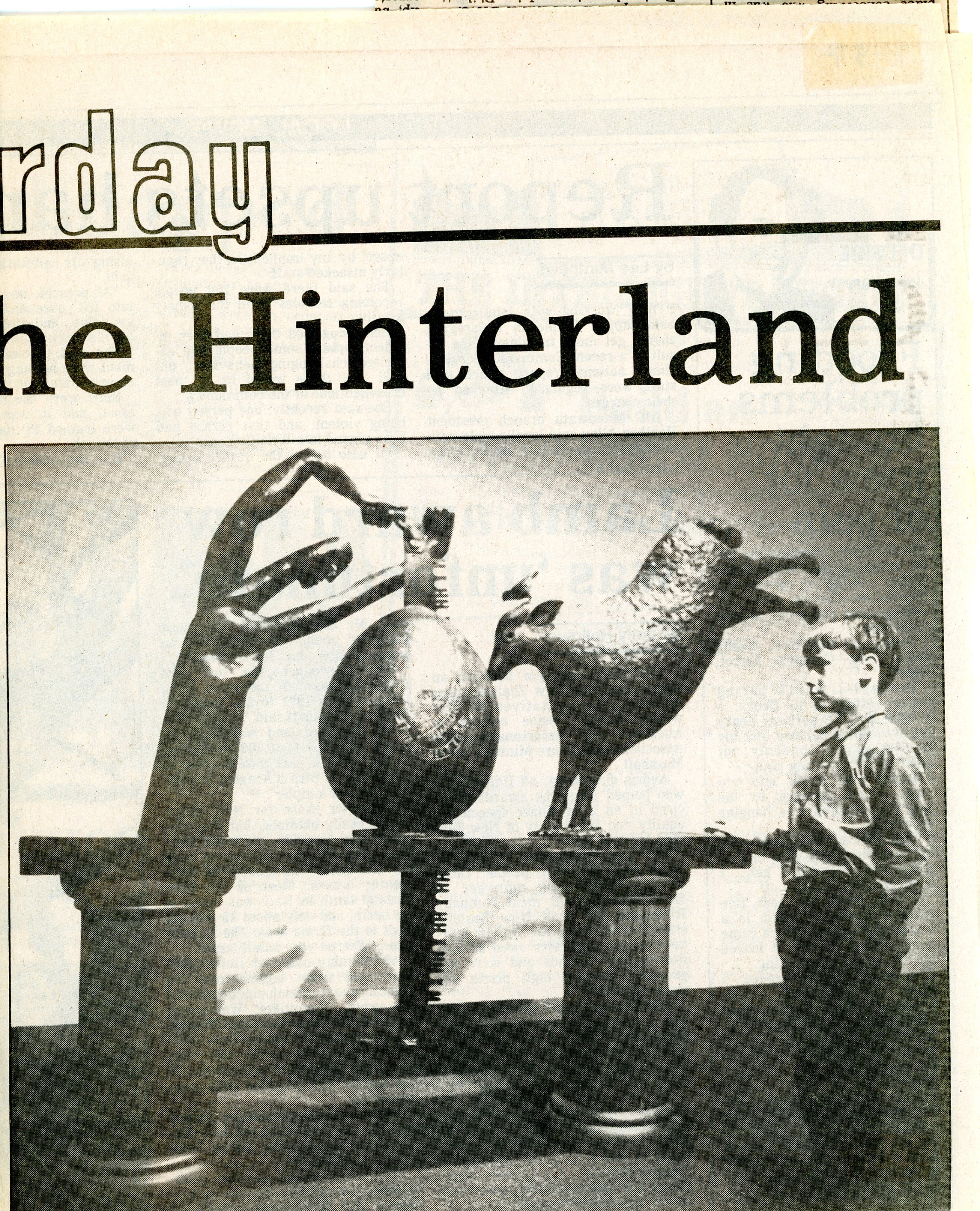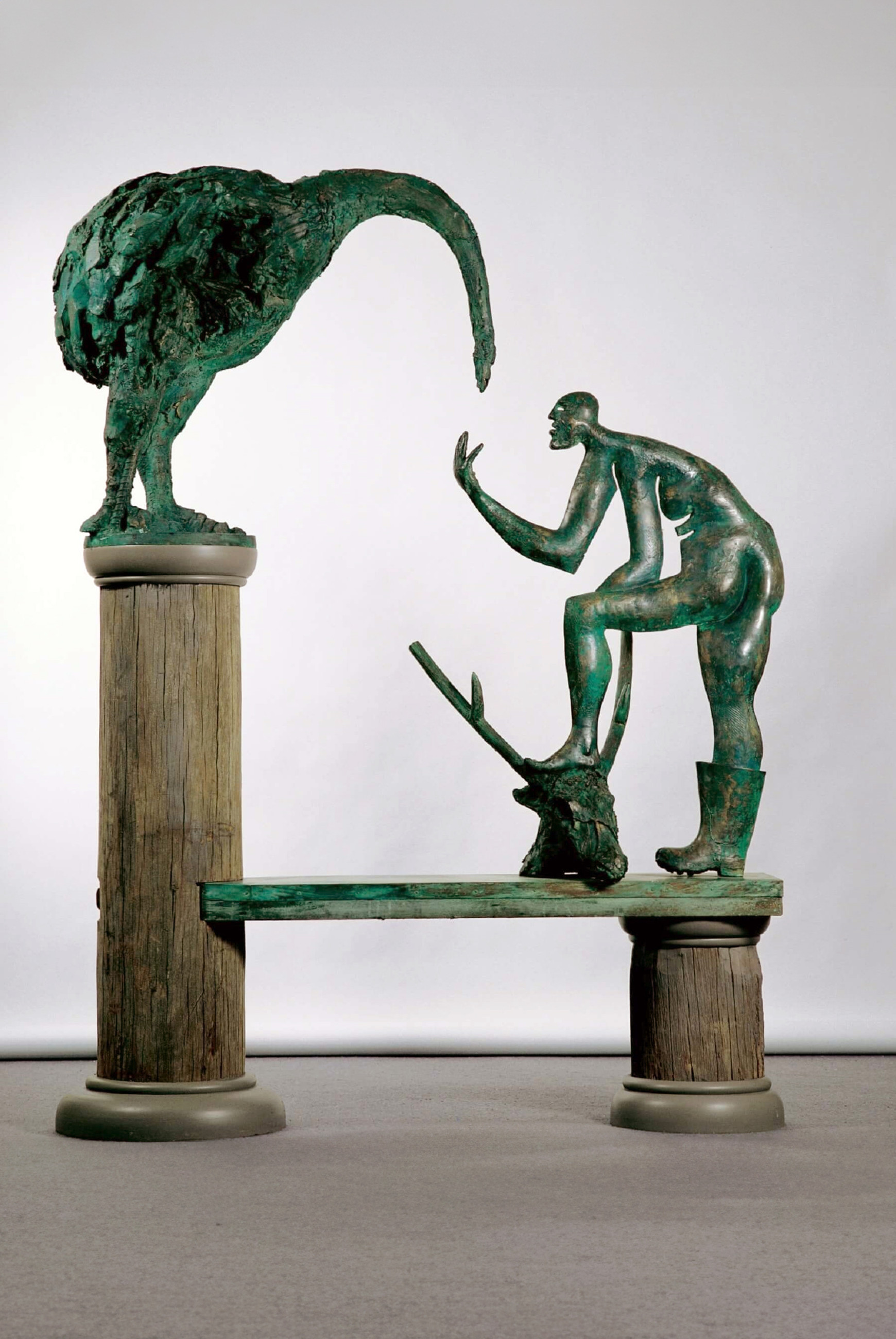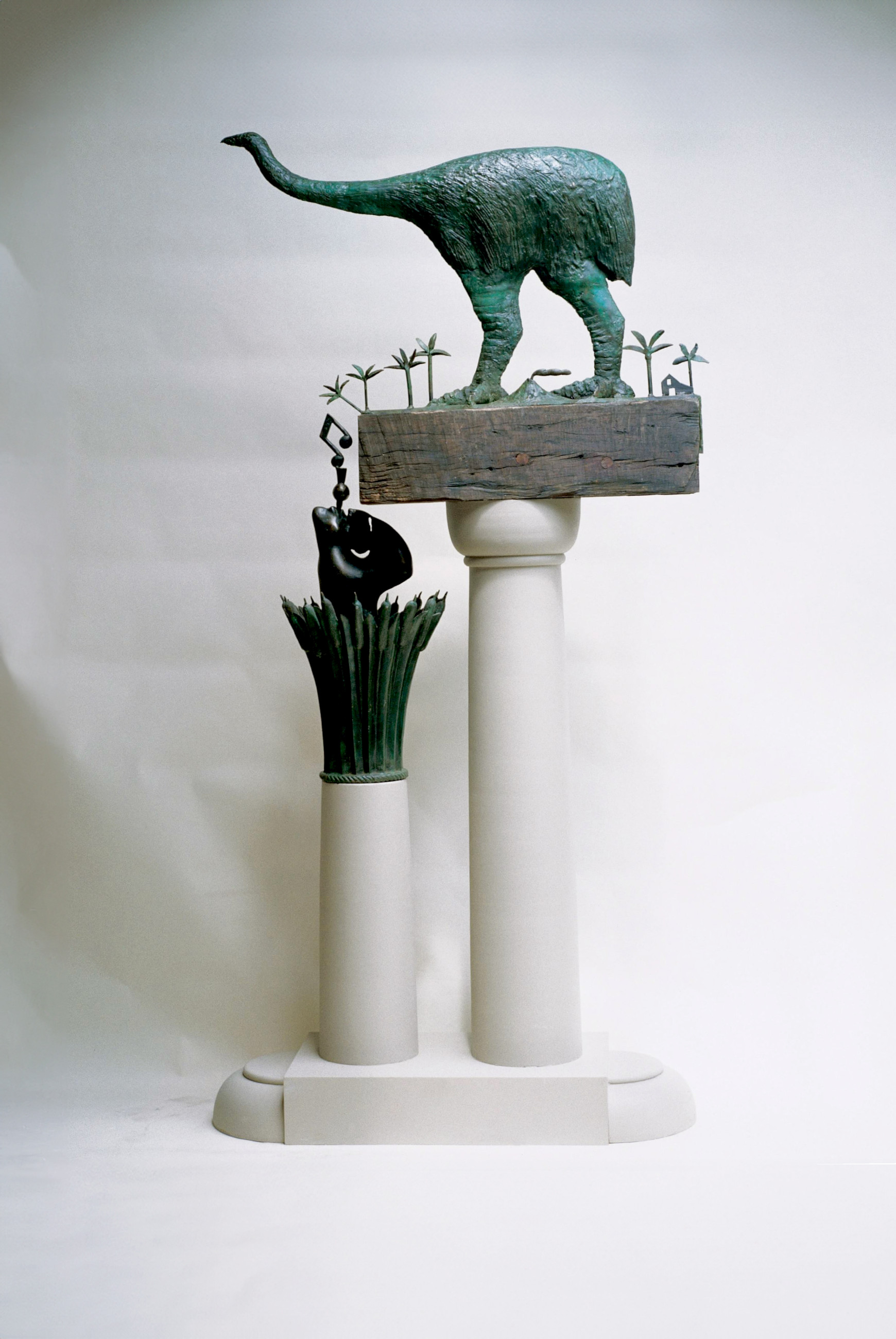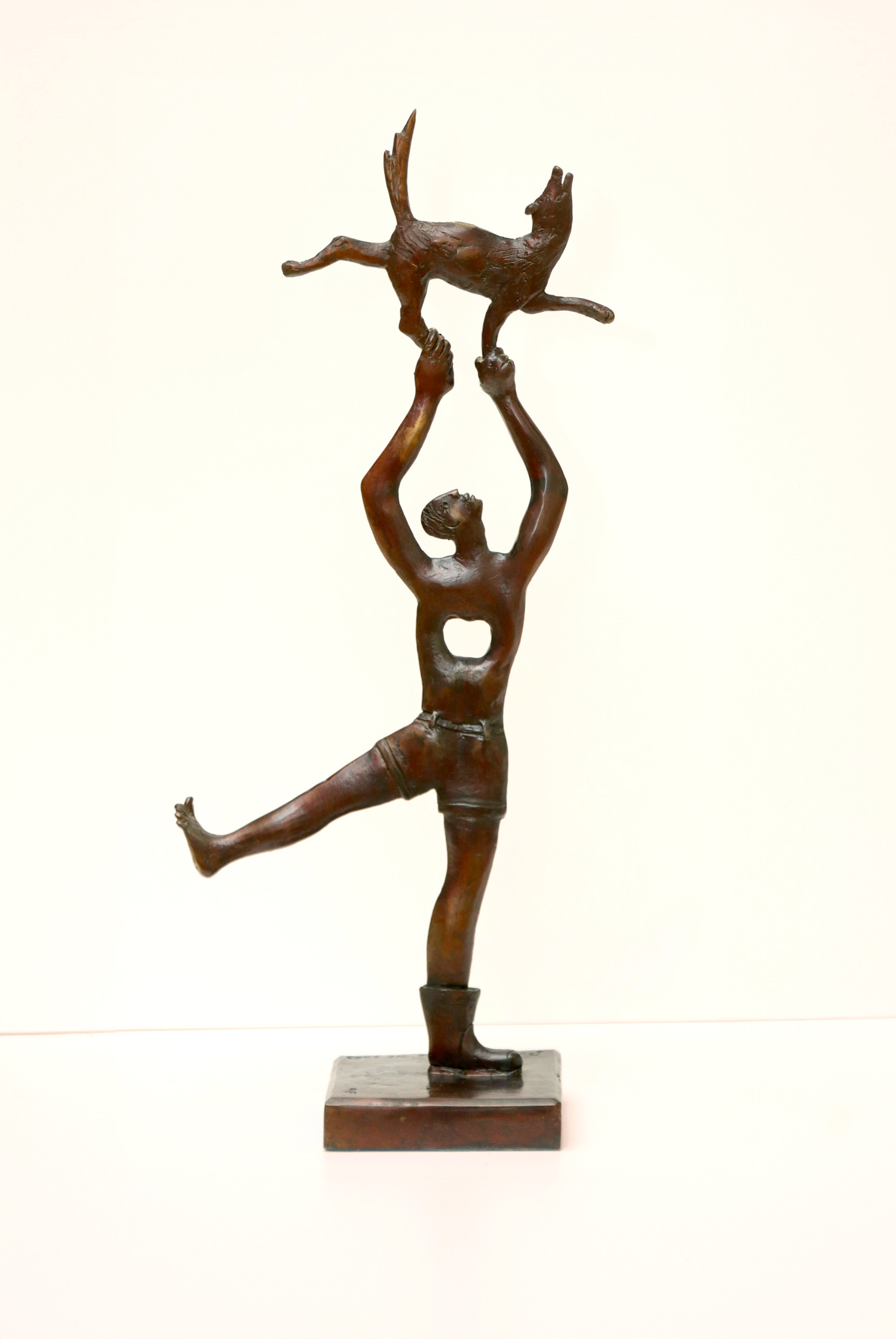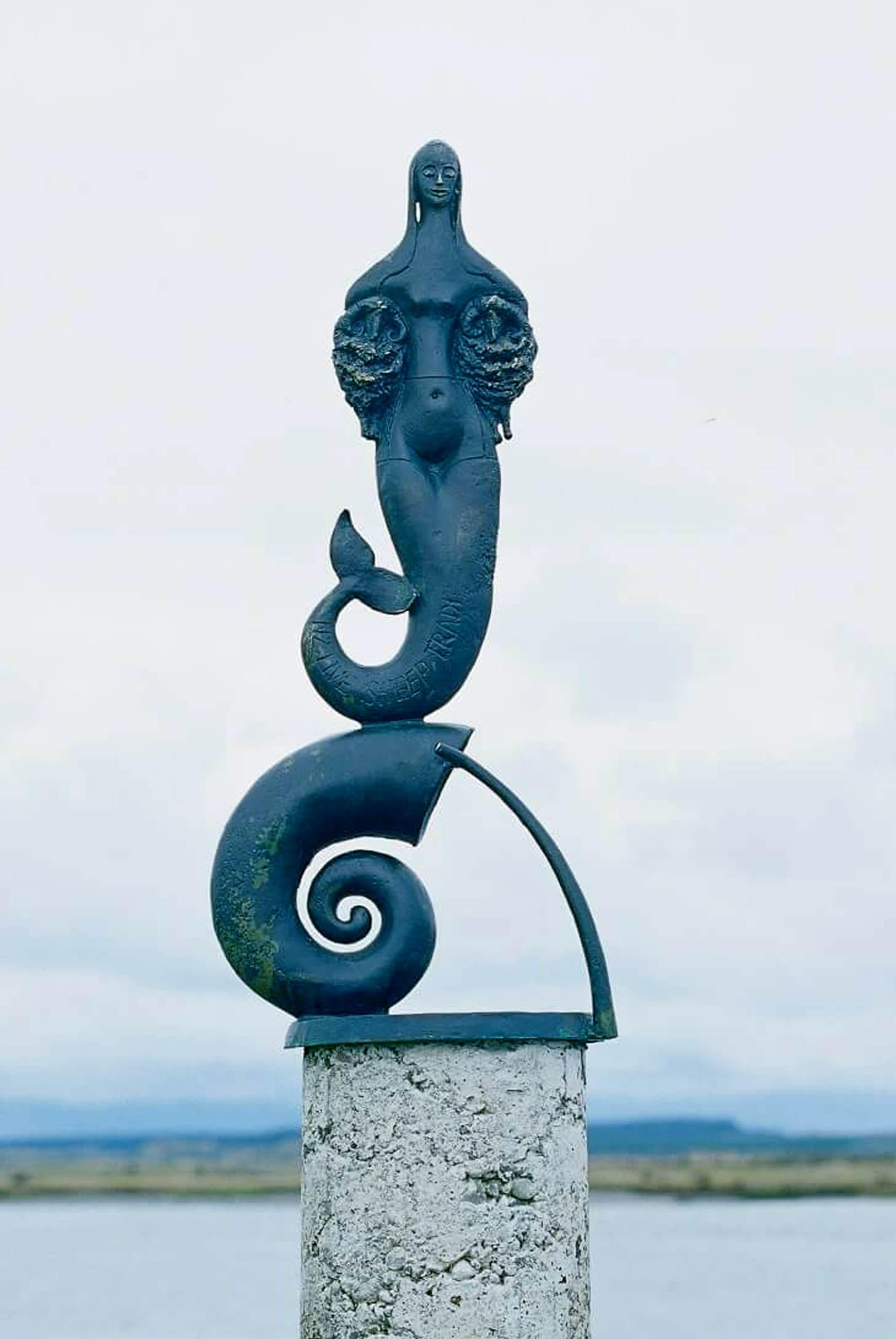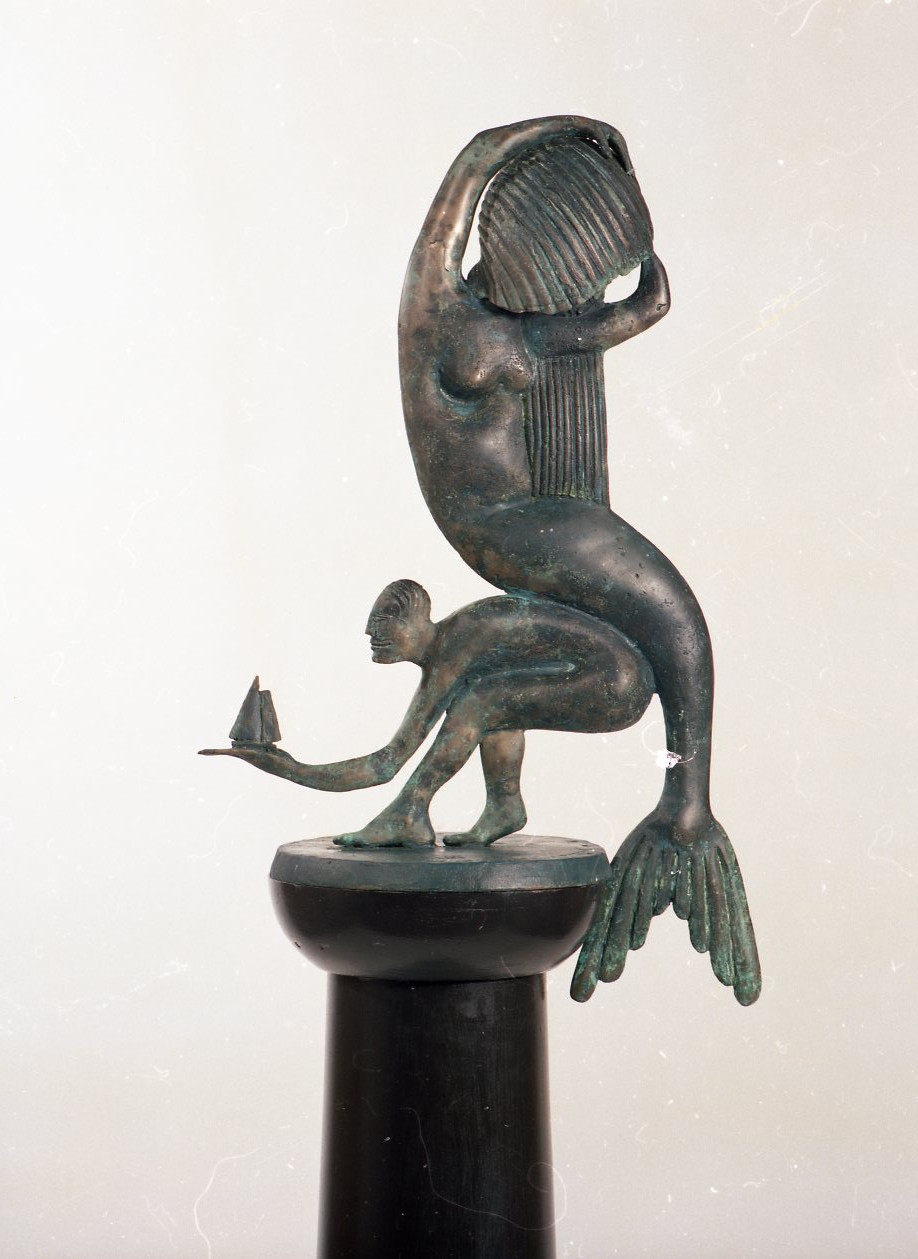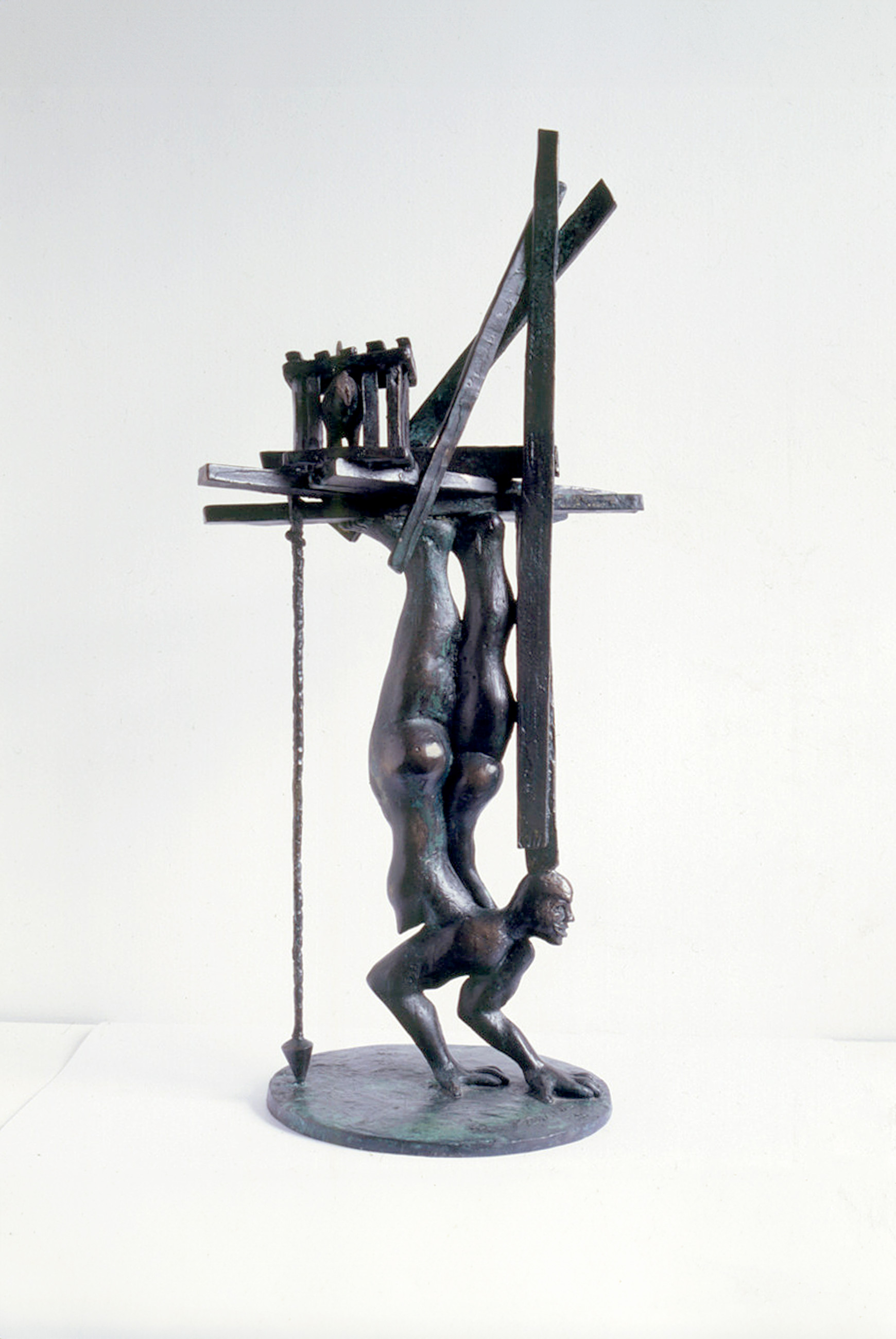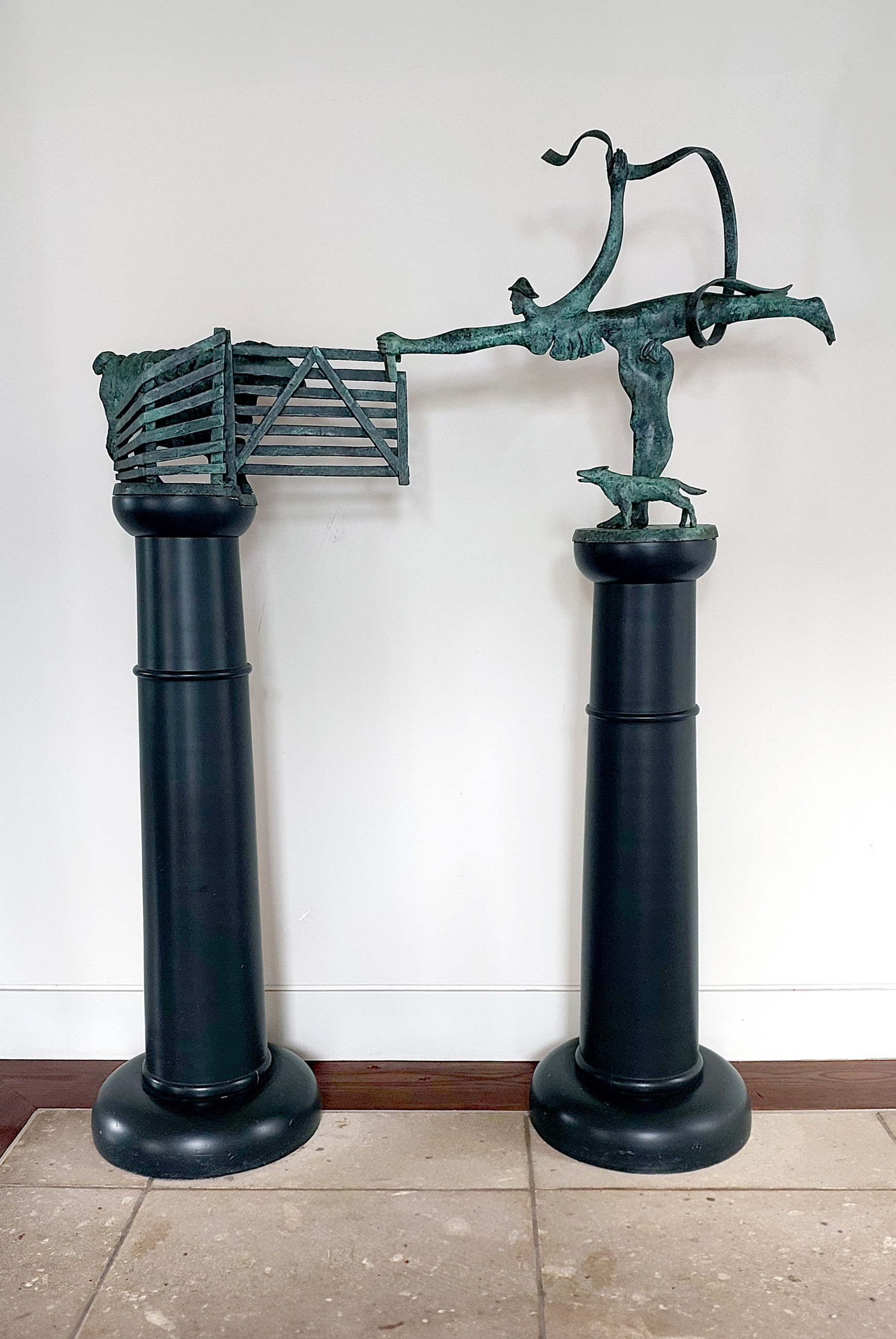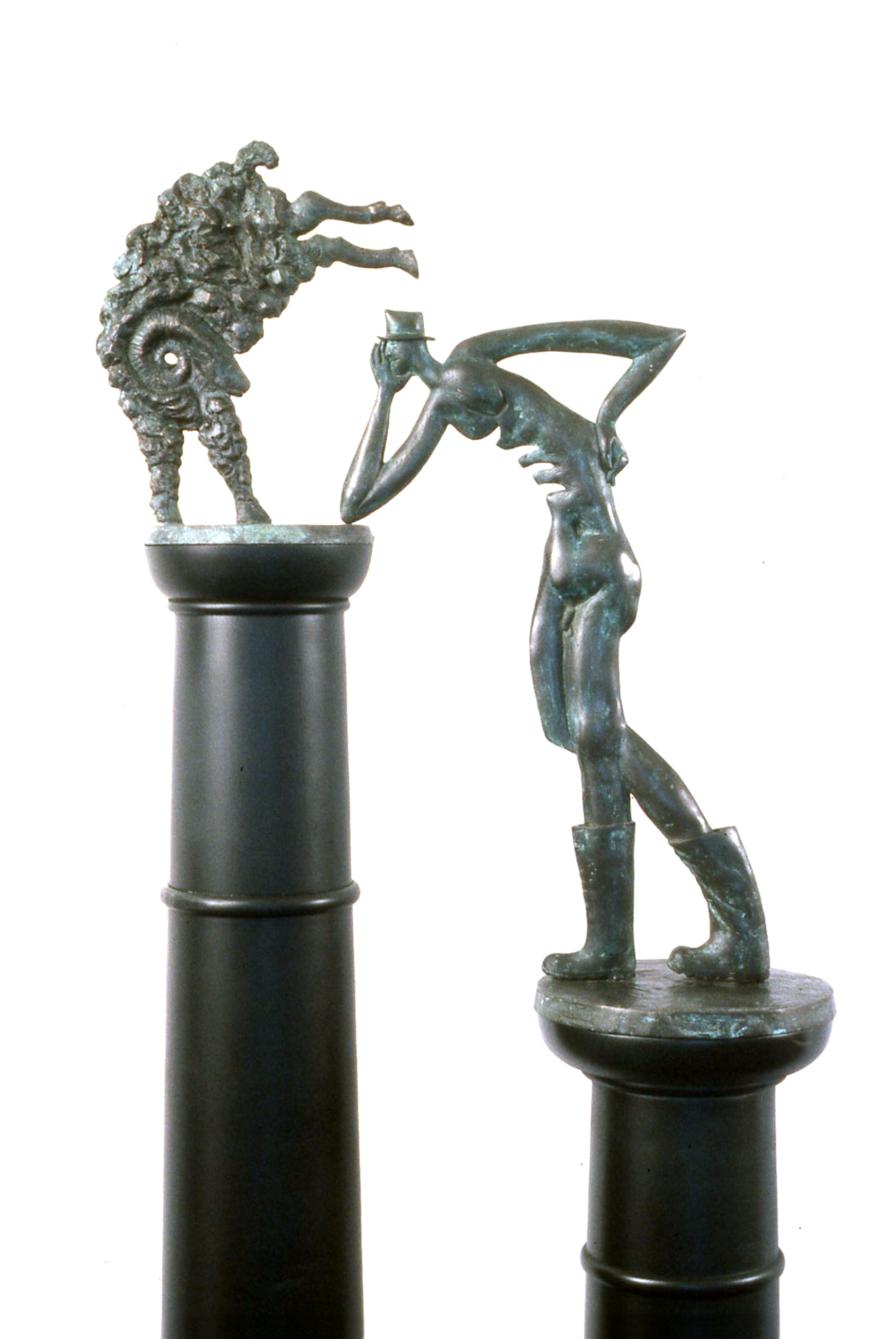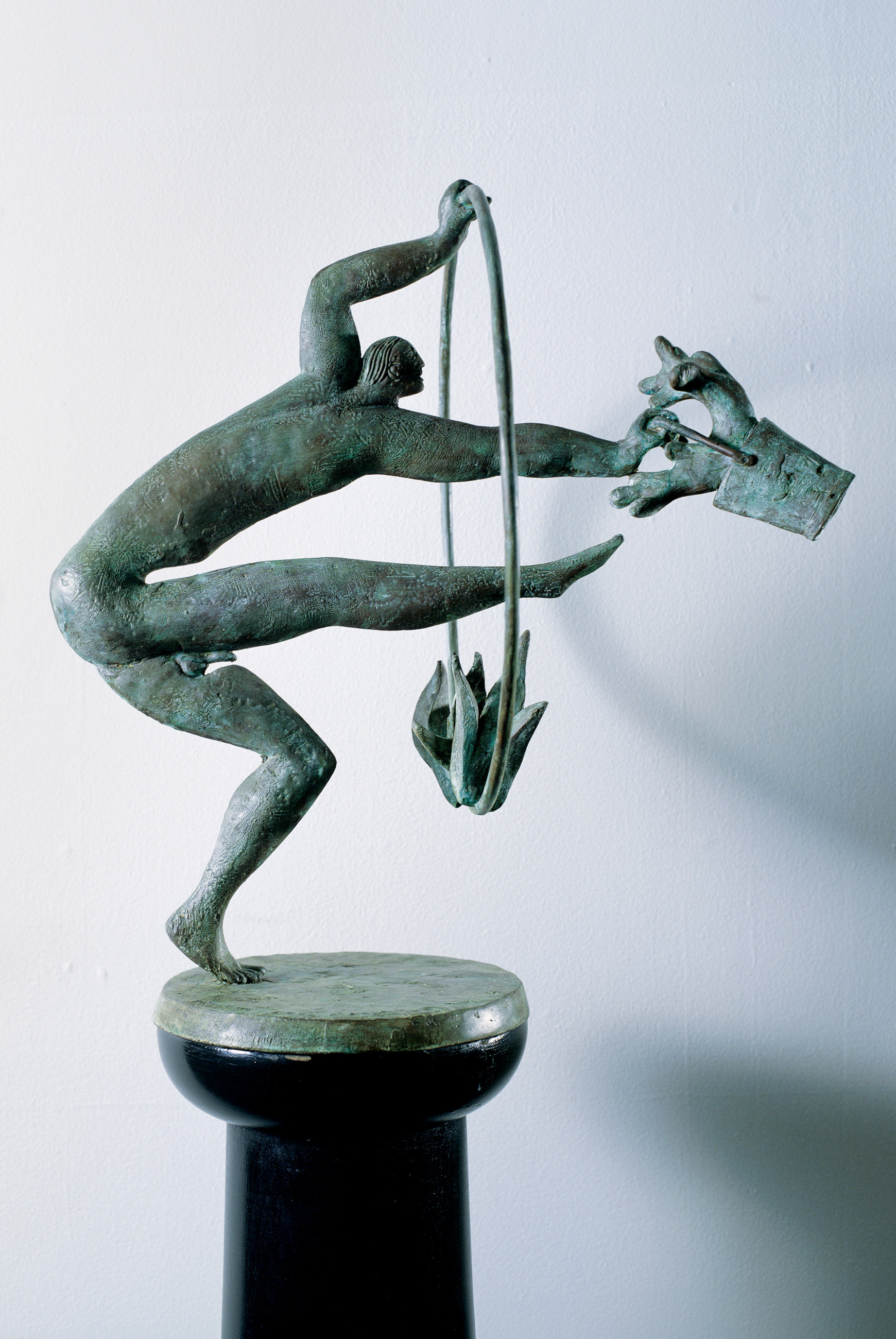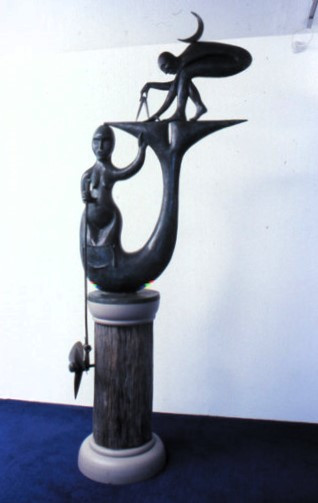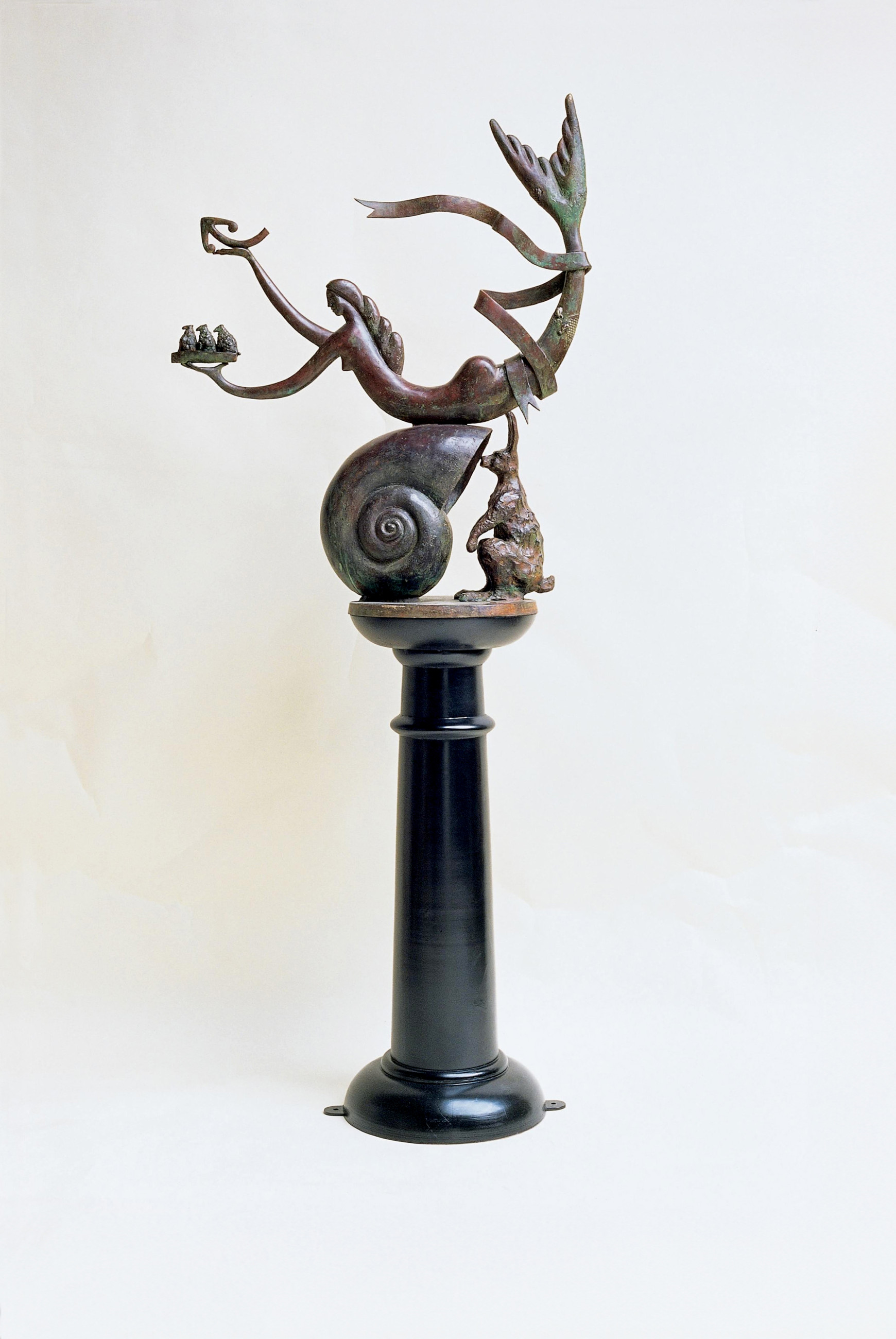September 5 - November 1, 1992 Stories from the Hinterland
September 5 - November 1, 1992 Stories from the HinterlandSolo, The Dowse Art Museum, Lower Hutt
Text
After his acrobat works, and this is one bare year later, Dibble’s work seemed constantly on the move in this era, the works become more consumed with myths. Two creatures made up this series – the rabbit (one could say our most successful but less well-liked immigrant) and the mermaid. Together they functioned as an odd sort of duo; the mermaids as hero figures – carrying boats or with a rescued sheep across their shoulders to safety - while the rabbit acts as silent on-looker. In Stories from Our Fathers: Monument to the Hinterlands, 1991, one of the largest in the period, the mermaid is dangling a line for the Groper head below, while the rabbit looks into a large ram’s horn shell as if contemplating it as a possible home for a new burrow. Rabbits and this mythical sea creature may seem an incongruous mix, but these are dreamy loose meanderings. Rabbits on boats were signs of good luck, rabbits are creatures both cute and cuddly but utterly destructive. These are winding stories not summed up in a simple narrative line. Looking and Listening for the Sea, 1992 plays on our fondness for a watery coast. The mermaid holds a giant shell at her ear, the trick we show children of hearing the sounds of ocean, while as nurturing protector, she cradles a small fish.
Some of these soft stories unexpectedly connected with real time news issues. Live Sheep Trade, 1991 comments on the unliked new practice of exporting sheep live across waters. In The Arrivals, 1995 (sitting later as a left-over piece of the period) it discusses newcomers arriving and being accepted into the country.
One of the latter ‘mermaid works’, slipping into the next year, made as commission for a client who had worked in seaports, Navigating the Antipodes, 1993 has the mermaid turning into a more Pacific rendition, the rounded form of the body and full face as if a Māori whakapapa figure. Her rope is tangled in the anchor below, while on her tail is a navigator, with callipers charting the journey, the moon on his back (literally) using the night sky to find his way.
This nostalgia finds its way even into the last section of this period when Dibble immersed himself in true farming stories – the land of pig and deer hunting, duck shooting, farm dogs and sheds.
Mermaids have passed their hero badges to the farmers who, with dogs, wrestle sheep into pens. In Monument to a Dogs’ Show 1, 1992 the stance is like a ballet dance. They blow whistles, hiding in Raupo reeds, trying to lure large moa to re-emerge (Big Bird Hunt, 1993), or they jubilantly celebrate a favourite dog (Learning New Tricks on the Farm, 1991). They are pragmatic characters, ‘good keen men’ you could call them, but unspoken heroes too in this land of Dibble.
